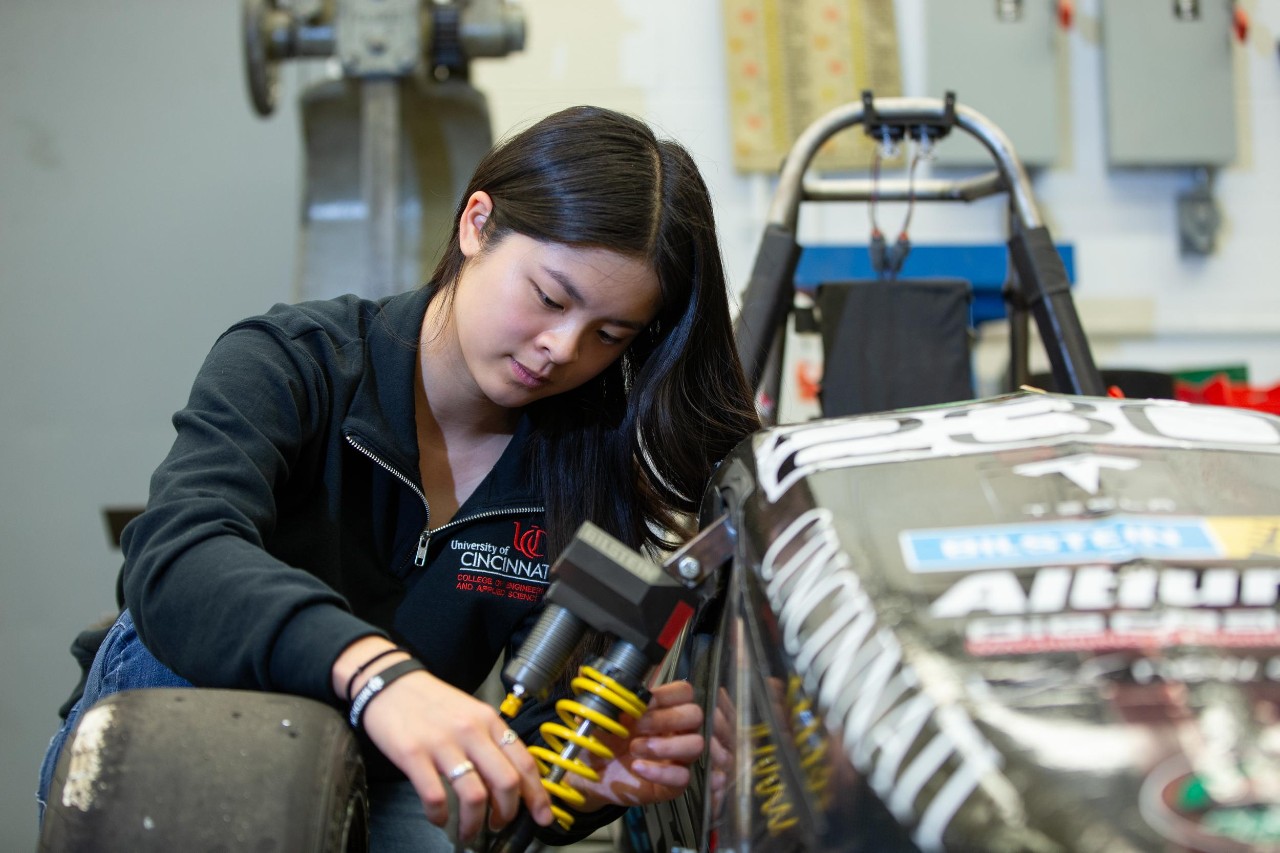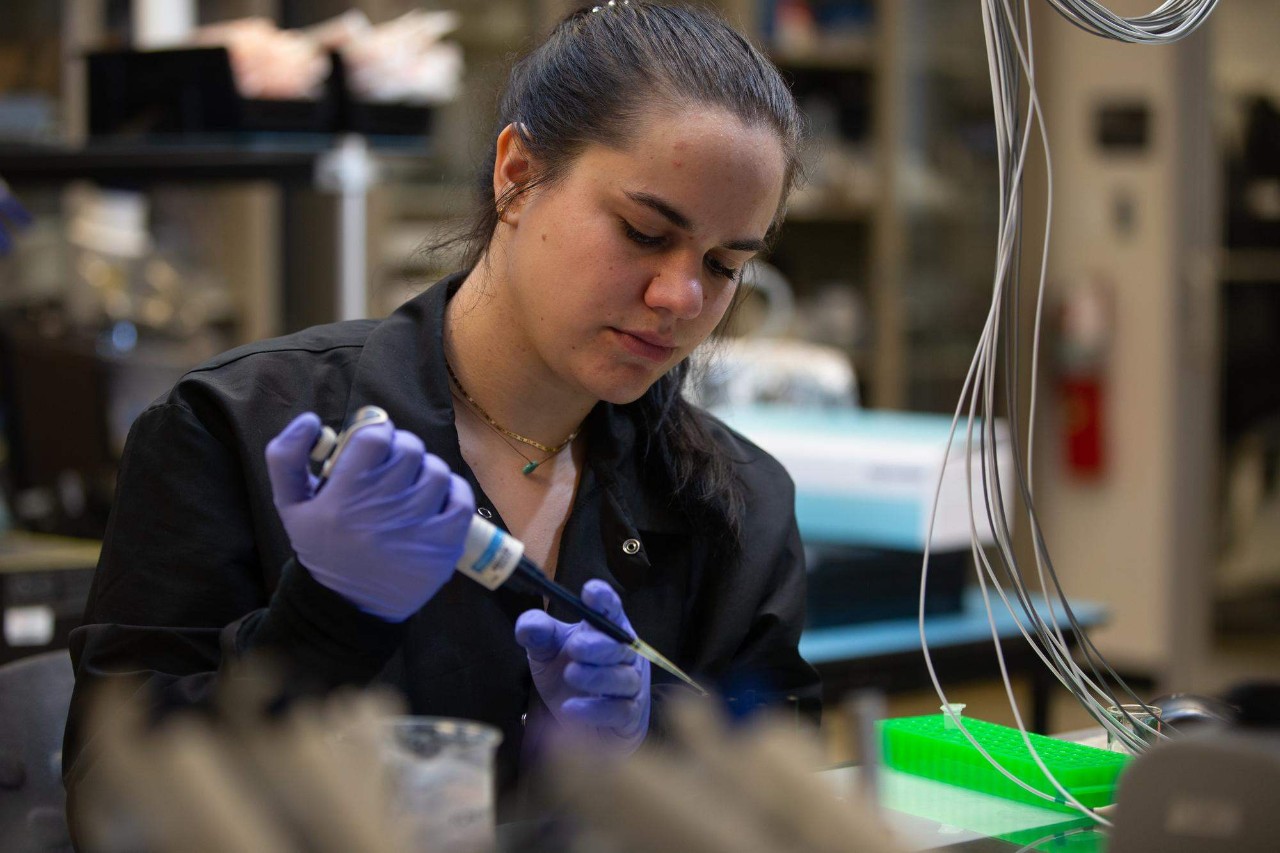
Engineering’s gender gap narrows
With much to celebrate, women in engineering say there is more to do to reach equity
When Vanessa Glotfelter was in high school, she shadowed her uncle Dave for a day at his city engineering job.
“They were building a golf course, and I got to go on a four-wheeler. I thought, ‘This is so cool! This is what civil engineers do?’”
Glotfelter earned a bachelor’s degree in civil engineering from the University of Cincinnati. And while she never rode another four-wheeler on the job, much to her disappointment, she said engineering has been a rewarding career.

Vanessa Glotfelter. Photo/Provided
Today, she directs the Montgomery County Transportation Improvement District, a public agency in Ohio dedicated to infrastructure improvements that support economic development and other county priorities. Previously, she served as its director of engineering.
“I think engineering is a wonderful profession,” she said.
June 23 is International Women in Engineering Day, dedicated to honoring the achievements of women in engineering and inspiring girls to pursue careers in the field.
Women are underrepresented in most engineering fields, according to federal labor records.
Fewer than 2 in 10 engineers are women. In the United States, women still face a pay gap between their male counterparts. According to the Bureau of Labor Statistics, women earned 84% the median salaries of men across all jobs. And surveys of engineers found similar reported discrepancies in pay.
But this gender gap is narrowing. College enrollment in engineering and computer science among women has more than doubled between 2011 and 2020, according to the Society of Women Engineers. Women grads now dominate fields such as biomedical engineering.
Women hold leadership positions in the U.S. Army Corps of Engineers and professional organizations such as the Institute of Electrical and Electronics Engineers and the American Institute of Aeronautics and Astronautics. Women lead Fortune 500 companies such as General Motors, Northrop Grumman Corp., Siemens and Oracle.
“Over the past generation, we've witnessed remarkable progress as women have broken barriers and excelled in all fields of engineering,” said Whitney Gaskins, associate dean of UC’s College of Engineering and Applied Science.
“Despite these strides, it is undeniable that women are still not always treated equitably in the workplace. Gender biases and disparities in pay and opportunities persist. However, the resilience, talent and contributions of women in engineering continue to shine through, showcasing their invaluable role in driving innovation and advancing the field.”

UC mechanical engineering student Brooke Boeding works at Cincinnati tech company Kinetic Vision as an engineering co-op. Photo/Andrew Higley/UC Marketing + Brand
Graduate Glotfelter said she had the benefit of engineering role models like her dad, her uncle Tim and her uncle Dave. When she talks to schoolchildren about career options, she tries to show them the broader possibilities.
“For them to see someone and say, ‘Hey, they look like me’ — that’s huge,” she said.
Glotfelter said workplace gender biases were apparent after she had her two boys.
“When I returned from maternity leave, I heard things like, ‘How was your vacation?’” she said.
After having her second child, she was promoted to vice president of her company.
“But it wasn’t without a lot of hard challenges that could have been made easier,” she said. “There has to be recognition that because women have a unique ability to have children, there must be support during those childbearing years.”
I'm proud to be a professor in a male-dominated field and hope to be a role model for future engineers.
Rachel Cross, UC Assistant Professor of Civil Engineering
Assistant Professor Rachel Cross teaches civil engineering at UC. She said she benefited from the support of mentors and role models as she embarked on her career.
“At UC, we similarly have these types of programs: Women in Engineering, the Society of Women Engineers and a social sorority for engineers, Phi Sigma Rho,” Cross said. “These groups can provide support and foster a sense of belonging for women enrolled in UC’s College of Engineering and Applied Science.”
In her lab, Cross studies structural steel design, seismic analysis and hazard resilience, among other topics. To set up her structural testing lab, she had to overcome a skills gap in using power tools and construction to support the heavy equipment.
She applauded the strides women are making in engineering.
“Diversity in the engineering population means the opportunity to bring together people of diverse backgrounds that can work together to solve complex engineering problems,” Cross said. “While there is still room for improvement, it's encouraging to see more and more women joining STEM fields.
“I'm proud to be a professor in a male-dominated field and hope to be a role model for future engineers,” she said.

UC Assistant Professor Stacey Schutte, right, works with research associate Andreja Moset Zupan in Schutte's biomedical engineering lab where they are studying new treatments for fibroids. Photo/Andrew Higley/UC Marketing + Brand
UC alumna Glotfelter faced challenges familiar to many students to pursue her dreams. She paid her way through school with scholarships and part-time jobs as a waitress when she wasn’t working at her co-op, in which students divide the year between class work and full-time employment in their chosen field.
UC has the unique distinction as the birthplace of cooperative education. In 1906, UC engineering professor and dean Herman Schneider invented co-op. Today, UC is home to the world’s third-largest co-op program, where students earn a collective $65 million each year while working for more than 1,300 employers.
“I came to UC mainly because of its co-op program,” she said. “That provided fantastic guidance for me for the type of career I wanted after school.”
But that still left time for her to join a sorority, Tri Delta, and help new students adjust to campus life as a student orientation leader.
Today, Glotfelter works to make Ohio’s roads safer. Her latest project is addressing a dangerous intersection where three people have died in the last two years. The county is installing a roundabout, which has been shown to reduce the number of serious or fatal crashes by as much as 90% compared to two-way intersections.
“Traffic safety is something near and dear to my heart,” she said. “The fact that I can make a difference is fantastic.”
Featured image at top: UC College of Engineering and Applied Science student Emma Vail completed co-ops with Honda Motor Co. and plans to pursue a career in automotive design. Photo/Andrew Higley/UC Marketing + Brand

UC student Hope Whitestone conducts research in UC College of Engineering and Applied Science professor Jason Heikenfeld's lab. Photo/Andrew Higley/UC Marketing + Brand
Become a Bearcat
Whether you’re a first-generation student or from a family of Bearcats, UC is proud to support you at every step along your journey. We want to make sure you succeed — and feel right at home.
Related Stories
Engineering’s gender gap narrows
June 20, 2024
UC's College of Engineering and Applied Science has launched the careers of many women across engineering disciplines. With much to celebrate, women say there is still more to do to reach equity in the workplace.
Passion for infrastructure drives student's return to finish degree
July 7, 2021
Vernisha Walker's passion for designing a better environment led her to return to University of Cincinnati to finish her degree in civil engineering, bringing with her experiences from almost a decade out of the field, 6 years in the health insurance industry, and becoming a first-time mother.
Hong Kong to UC to New York City
July 24, 2020
Mark Woo came to Cincinnati from Hong Kong when he was 17 years old. Now, he is set to graduate from UC next May with both bachelor's and master's degrees in architectural engineering.
